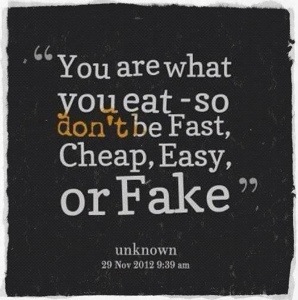Here’s hoping you saved yourself some cash at the grocery store after reading yesterday’s post. Today I’ll give you more cost-cutting advice including my secret on how to save money AND get your kids eating more veggies. I will also share with you some of my tips on savvy label-reading so you won’t get gypped.
#3 GO GARDENING
- Herbs. Houseplants and I don’t get along very well. I have just recently kept my first one alive for over a year and I’m thrilled (as is the plant). So when someone gave me a pot of herbs for my backyard, I worried those little herbs were doomed. I stuck it in a sunny spot and watered it a bit from time to time and those suckers grew by leaps and bounds. I was totally stunned. In an effort to save yourself the $2-3 per small bunch of organic basil, dill or thyme you find at the store: try your own hand at it. You will be amazed at the abundance you’ll have just outside your backdoor.
- Veggies. Another great option is to grow organics at home with assistance from aeroponic growers like the Tower Garden. The range of your favorite vegetables, herbs and fruits! you can grow at home is amazing.
A veggie bonus tip: My kids now water the robust pot of herbs in our backyard. What I’ve come to discover is that I can serve almost any food in the world to my kids, and if it involves something that came out of our pot of our herbs, they will taste it. This is especially true if they got to harvest the herbs and sprinkle them on our chicken or asparagus themselves. The reason ? They’re curious. They are dying to know what they’ve helped create.
#4 GO SMART
- Produce. If you can’t afford to buy your produce 100% organic, rely on the Environmental Working Group’s “dirty dozen” —foods that contain the highest levels of pesticides—as your go-to reference for must-buy organics. Apples, celery, strawberries, peaches, and spinach top the list. To confirm that your produce actually is organic, check the sticker number on your produce. The number should begin with a “9”.
- Chicken and pork. Watch out for sexy labels. Do not pay more for chicken or pork that says “hormone free” on it. The U.S. prohibits growth hormones to be used in chickens or pigs so all of their meats are “hormone free” except for what is naturally-occurring.
- Eggs. Pastured eggs are a beautiful thing. When chickens are able to feed on bugs and worms instead of corn and soy or animal by-products, the fats you get from eating their eggs are filled with healthy omega-3s. But a word to the wise, the terms “cage-free” and “free-range” are very loosely enforced. In fact, you may use these terms on your packaging if your chickens have access to the outside. In some cases, this means there is a small door available for them to go in and out of. What does that mean ? When it’s your birthday you get to be put outside? I don’t know. My advice to you is to get to know your eggs. Some eggs that say “pastured” are, in fact, pastured eggs. My favorites are Vital Farms Eggs. You can find them at Whole Foods.
So good luck my conscious-consumers and please share with us below your tips for getting more bang for your organic buck.


How to Stretch Your Organic Dollar Even Farther http://t.co/ULZSJFg7FP
How to Stretch Your #Organic Dollar Even Farther – tips from The Wellness Pantry! http://t.co/PWCZcVss3v